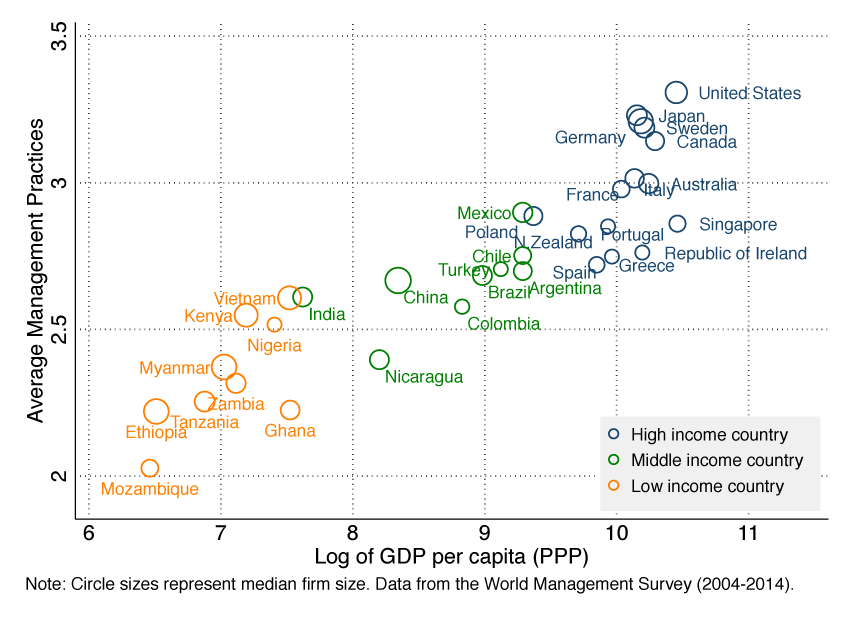WHY INDUSTRIAL POLICY
Any kind of economic activity requires a number of public inputs, both ‘hard’ and ‘soft’. These inputs are specific to economic activities, rendering sector or sub-sector-specific policies unavoidable.
While vertical policies are interventions designed to benefit specific sectors, sub-sectors or firms, horizontal policies are designed to benefit a wider range of producers across the economy. Another helpful distinction is between “public inputs”, which facilitate production by private actors, and market interventions, which alter the profit equation of private firms. This leads to the 2×2 box below with some examples of industrial policy[1]:
HORIZONTAL POLICIES
Public inputs
- Electricity generation
- Competition policy
- Higher education
Market interventions
- Business climate reform
- R&D subsidies
- Tax breaks for FDI
VERTICAL POLICIES
Public inputs
- Phytosanitary control
- Technological institutes
- Bespoke infrastructure
Market interventions
- Tax exemptions
- Targeted FDI attraction
- Import tariffs
Industrial policy can be thought of as the set of public inputs required for production in an economy (when discussing the government’s overall policy) or in a sector. In our framework, we care about purposeful industrial policy, aiming at structural transformation and the acquisition of productive capabilities. While it is desirable that the private sector be the main focus of an industrial strategy, different models of partnership between the public and private sectors may be called for in strategic sectors where private investment is not forthcoming on its own.
Developing countries’ economies are characterized by a wide dispersion in productivity levels, and low levels of overall capabilities, as measured by the quality of management practices. In the chart on the right, we can see how the average quality of management practices is correlated with countries’ income levels, and how African countries are clustered at the bottom left.
The role of industrial policy is to simultaneously help improve the capabilities of the most promising firms and allow resources to flow to the fastest-growing sectors of the economy.
[1] This distinction, and the 2×2 table below, are adapted from Gustavo Crespi, Eduardo Fernández-Arias and Ernesto Stein (2014) – “Rethinking Productive Development: sound policies and institutions for economic transformation” Inter-American Development Bank. New York City: Palgrave Macmillan
Improving Management Practices
There exists a considerable body of evidence testifying to the positive effects of management quality on various aspects of firm performance[1]. An obvious policy implication of these findings is that we should find ways to impart these management skills to firms.
A good historical example is offered by Michela Giorcelli[2], who measures the long-term impact of US programme that offered management training trips to Italian managers between 1952-1958, as part of the Marshall Plan. She finds that the performance of firms that sent their managers to the trips improved for at least 15 years after the programme. Interestingly, the performance of firms that only received machines also improved, but the improvement flattened over time, while those that combined machines and management training had the greatest improvements in performance.
To test for the effects of management practices, Bloom et al.[3] perform an experiment where they offer free management consulting to textile plants in India. Comparing the performance of firms that did and did not receive the consulting, they find that the former achieved large increases in productivity and an average increase in profits of $325,000, compared to an intervention cost of $200,000.
Despite these positive examples, the literature on management interventions is still inconclusive, as some studies are unable to find effects of interventions on firm performance. Bloom et al. (2017)[4] suggest this might be related to the quality of these interventions, the type of practice they focus on, and the extent to which they manage to elicit a change in management practices among recipient firms.
[1] See Lippolis and Peel (2018) – “Firms, Productivity Dispersion, and Reallocation”, Background Paper for Programme on Rethinking African Paths to Industrial Development. Blavatnik School of Government and Centre for the Study of African Economies, University of Oxford
[2] Michela Giorcelli (2017) – “The Long-Term Effects of Management and Technology Transfers”, Mimeo
[3] Nicholas Bloom, Benn Eifert, Aprajit Mahajan, David McKenzie, and John Roberts – “Does Management Matter? Evidence from India”, Quarterly Journal of Economics, 128(1): 1-51
[4] Nicholas Bloom, Renata Lemos, Raffaella Sadun, Daniela Scur, and John Van Reenen (2017) – “Management and Productivity in the Private Sector, PEDL Policy Insights Series No. 1

